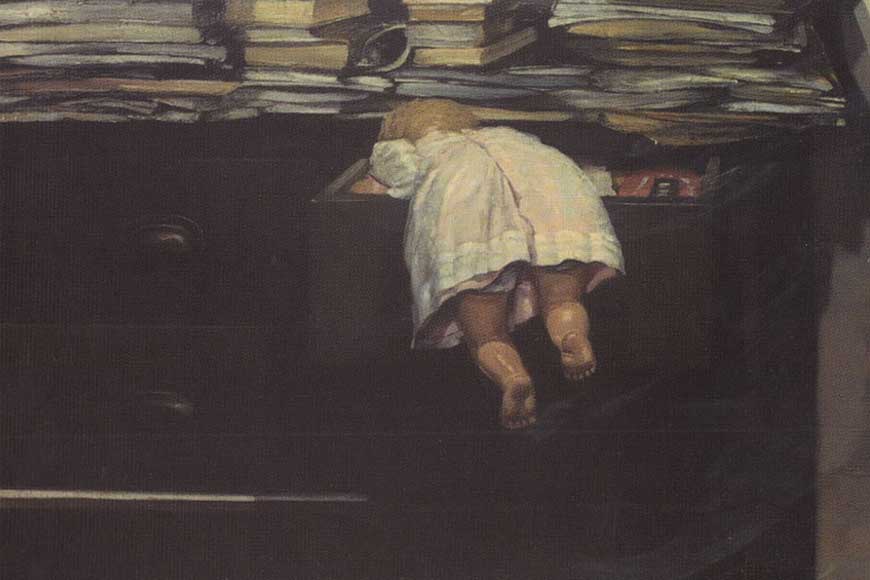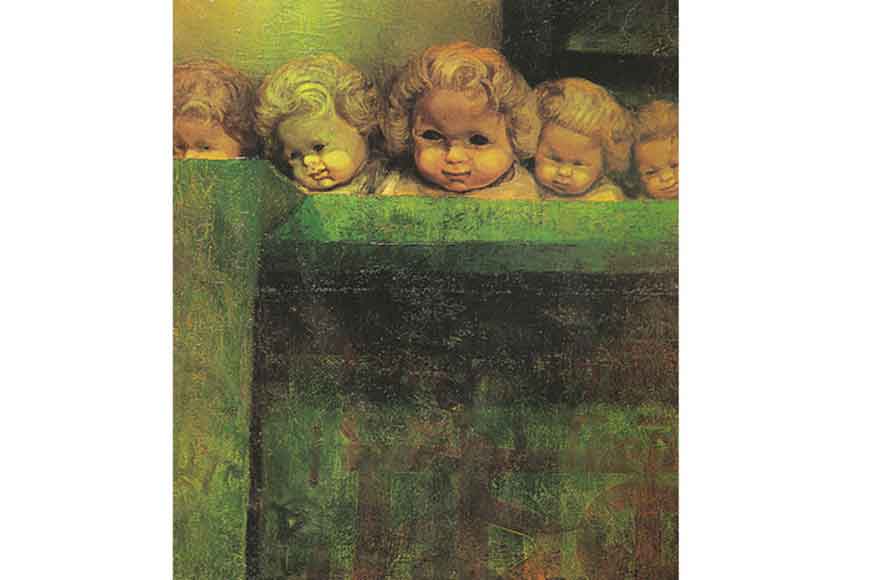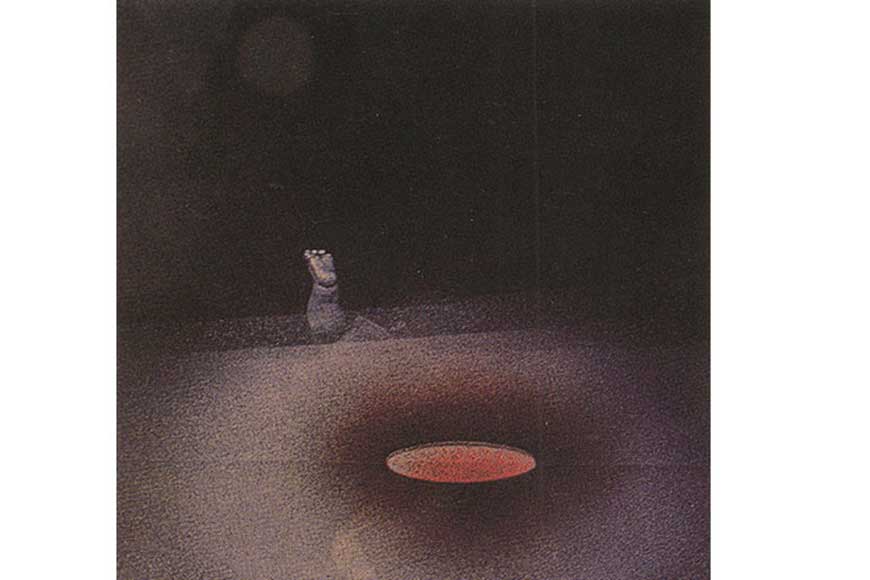Famous Doll series of Bikash Bhattacharjee is a silent witness to Bengal’s Naxal movement

Kolkata of 1970s was a revolutionary city, where protests were the order of the day. After all, the fire that burnt within, gave form to a city that is still hailed as the intellectual capital of India. Often wall graffiti proclaiming slogans like “Chinese Chairman is Our Chairman” were seen painted. The protests had even reached within popular eateries on College Street like Basanta Cabin, a restaurant frequented by college and university students, young professors, thinkers, authors and painters. If they asked for two cups of tea and an empty cup, they would instruct the bearer, “Two cups of tea and a Siddhartha.” Revolutionary ideas were spreading like wildfire. Naxal leaders like Charu Mazumdar and Kanu Sanyal called meetings under Shahid Minar, propagating ideas of the new movement.
But the protests soon turned violent. Media headlines showed how bomb blasts turned the peaceful city into a hot bed of a new revolution. This was a time when the ‘Little Red Book’ (an icon of China and communism) was tucked under every aspiring revolutionary youth’s pillows. Many tried hard to set contact with Radio Peking from the hidden confines of their closed doors. This was also a time when a particular ‘doll’ appeared in the paintings of famous artist Bikash Bhattacharjee.

The doll was seen moving around dark, dingy lanes of North Calcutta at dusk, looking for something. Sometimes it got friends and associates and read slogans written on walls in blood-red, declaring the intention of the revolutionaries --- to capture Writers Building, the administrative headquarters of the state government. Sometimes the doll resembled Jesus Christ, with hands outstretched, gradually sinking in the quicksand as the blood-red sun sets and darkness descends.
In those days, use of dolls was rare in Bengal Art. But artist Bikash Bhattacharjee got swayed by the revolutionary voices around and expressed himself through a new language of art --- dolls. But how did the idea strike him? One day his neighbour’s daughter came with her rag doll. She wanted him to mend and paint it for her. The artist promised to help and started looking at the rag doll from different perspectives when he had this brilliant vision of using it as a puppet in the hands of destiny.

Through the doll, he witnessed the Naxal movement rocking Bengal. The doll seemed to convey the predicament of Bengalis sucked in by an unknown political concept. Sometimes it represented a Bengali mother looking for her dead son’s corpse on the streets of Calcutta in the dead of the night. At times, the doll was seen peering inside a chest of drawers, searching for a hidden pistol next to the Little Red Book. Thus, the artist used the doll motif to represent vignettes of Bengali life during the turbulent ’70s. This also gave rise to the famous Doll series of Bikash Bhattacharjee, that remained as a silent witness to the Bengal’s revolutionary past.










